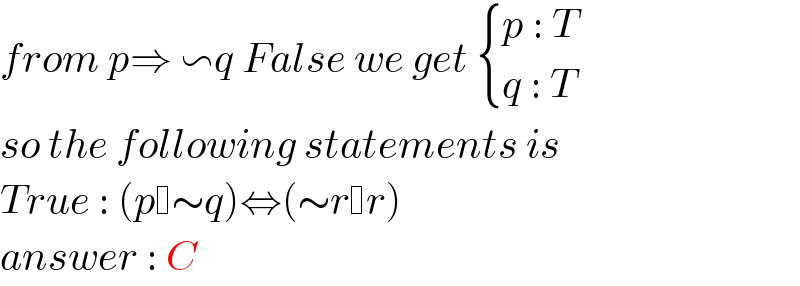
Question Number 135840 by abdurehime last updated on 16/Mar/21

Answered by liberty last updated on 16/Mar/21

$${from}\:{p}\Rightarrow\:\backsim{q}\:{False}\:{we}\:{get}\:\begin{cases}{{p}\::\:{T}}\\{{q}\::\:{T}}\end{cases} \\ $$$${so}\:{the}\:{following}\:{statements}\:{is} \\ $$$${True}\::\:\left({p} \sim{q}\right)\Leftrightarrow\left(\sim{r} {r}\right) \\ $$$${answer}\::\:{C} \\ $$
Commented by abdurehime last updated on 16/Mar/21

$$?\:\mathrm{where}\:\mathrm{is}\:\mathrm{the}\:\mathrm{value}\:\mathrm{of}\:\mathrm{r}??? \\ $$
Commented by abdurehime last updated on 16/Mar/21

$$\mathrm{how}\:\mathrm{to}\:\mathrm{evaluate}\:\left(\right) \\ $$
Commented by liberty last updated on 16/Mar/21

$${you}\:{know}\:{the}\:{value}\::\:\sim{r}\: {r}\::\:{False} \\ $$
